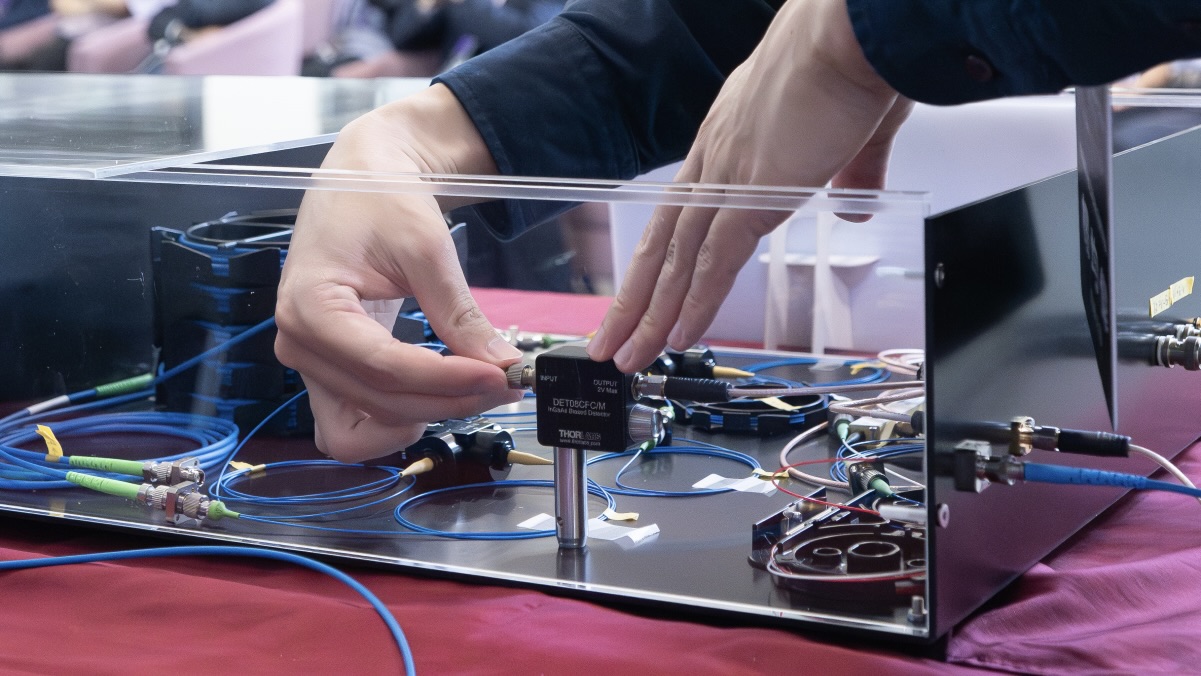
Scientists have built the smallest quantum computer in the world. It is the size of a desktop PC and can work at room temperature.
The machine is powered by just one photon, or light particle, embedded in a ring-shaped optical fiber, the scientists wrote in a study published Sept. 3 in the journal Physical Review Applied. The machine is a proof of concept and can complete mathematical operations such as prime number factorization — such as 15 = 5 x 3.
Many quantum computers and processors, including IBM's 1,000-qubit Condor chip, are built using superconducting qubits. But to tap into the laws of quantum mechanics and calculate using quantum superposition — which allows the qubit to exist in multiple states simultaneously — they must be cooled to near absolute zero. This requires complex equipment that typically takes up at least the size of a room.
Photons have long been proposed as an alternative to superconducting qubits, in a field known as "optical quantum computing." In February, scientists suggested that building qubits from a single laser pulse could let them make a stable quantum computer at room temperature, for example.
Related: 'World's purest silicon' could lead to 1st million-qubit quantum computing chips
In the new study, the scientists built a machine that can process calculations at room temperature. And because it doesn't need to be chilled, it is the size of a typical desktop PC. The quantum computer stores information in "32 time-bins or dimensions" within the wave packet of a single photon, study lead author Chuu, Chih-sung, professor of quantum optics at the Tsing Hua University in Taiwan, said in a translated statement. This is a world record for the number of computing dimensions that can be accessed by a single qubit, he added.

Unlike superconducting qubits, photons can maintain a stable quantum state at room temperature. A quantum machine that uses photons consumes less energy and is cheaper to run than. It is also more efficient to run than systems using trapped-ion qubits — charged particles suspended in free space by electromagnetic waves — which require complex lasers to precisely tune their quantum state.
Optical quantum computers with hundreds of photons already exist. But because photons appear probabilistically — meaning "they are there one second and disappear the next" — they are difficult to corral in large numbers, Chuu said.
Instead, Chuu and his team compressed all the information into one stable photon. He likened this work to transforming a bicycle that can carry one person into a 32-car train that can fit a huge number of passengers. The next steps are to continue improving the storage capacity of a single photon so that it can process even more complex calculations, he added.
Given the machine uses a photon as its qubit, it could easily be integrated into future quantum communication networks that use light to transmit data, or with other light-based classical computing systems, the scientists said.







